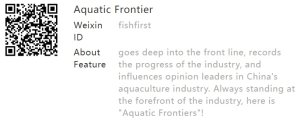 This piece was originally published in FishFirst (China) in October 2021.
This piece was originally published in FishFirst (China) in October 2021.
Author: Dr Brett Glencross, IFFO's Technical Director
While there are lots of good things about the state of the planet currently, there are also a few signals that indicate that problems are emerging that we (humans) need to consider and respond to. One of the better known of these is the issue of global climate change. Later this year, in the city of Glasgow in Scotland, my home country, the world will convene at COP26 (26th United Nations Climate Change conference) to consider a range of collective efforts to address future climate change.
It is well recognised that global climate change is being driven by an accumulation of greenhouse gas (GHG) emissions, which include carbon dioxide, methane, and chlorofluorocarbons among others. Irrespective of your position on this, the great thing about science facts is that they still exist even if you don’t believe in them. The science behind climate change is as solid as Newton’s laws on motion and Einstein’s laws on relativity.
So where does this lead us? Simply, it leads us to a path of responsible consumption. Consuming only that which we need (not what we desire) and ensuring that our children’s children are no worse off than we are now. To achieve this, we need to understand what the impact of our choices are, and food consumption is central to all of this.
In recent years a new branch of social science called lifecycle assessment (LCA) has emerged that uses various approaches to quantify the impacts of certain resource use on the emissions of GHG, the amount of land or water used, the nutrients released and so on. This LCA analysis method has become so important that it is now forming a critical decision-making tool in the sourcing of ingredients for feeds (and food) across the world, with agreed methodologies being standardised by the international standards organisation (ISO; https://www.iso.org/standard/37456.html) among other organisations. Indeed, Chinese scientists have been among some of the leaders in this field in the application of LCA to many aspects of food production, both within China and globally1,2.
One of the observations from the application of this LCA analysis method to aquaculture feed production has been the realisation that many of the raw materials that we have used in the past are more sustainable than those we are using in the present3. An excellent example of this is the use of fishmeals and fish oils, which consistently show a lower footprint for most indicators than that of most crop products, and most of the new novel ingredients like insect meals and GMO oils. Notably, when we examine the impact of traditional marine ingredient-based diet formulations, in reflection they actually had a pretty good environmental footprint, with low CO2 discharge, low energy use, and little to no reliance land or freshwater. However, when we compare that with the modern diet formulation approach, we see that they have a comparatively high demand for energy, high CO2 footprint and use a lot more land and freshwater resources. So, if feed sustainability is not better in 2020 than in 1990, why did we change you might ask? Well, that question goes back to the REAL original reason of why we began using alternatives in the first place, which was based on the recognition of constraints to expanding the availability of marine ingredients as aquaculture feed demand grew. It wasn’t that we considered marine ingredients bad or unsustainable, but rather that there was simply never going to be enough of them. These ingredients were always going to become strategic high-value ingredients, not the source of cheap bulk nutrients.
- Jianyi, L., Yuanchao, H., Shenghui, C., Jiefeng, K., & Lilai, X. (2015). Carbon footprints of food production in China (1979–2009). Journal of Cleaner Production, 90, 97-103.
- Song, X., Liu, Y., Pettersen, J. B., Brandão, M., Ma, X., Røberg, S., & Frostell, B. (2019). Life cycle assessment of recirculating aquaculture systems: A case of Atlantic salmon farming in China. Journal of Industrial Ecology, 23(5), 1077-1086.
- MacLeod, M. J., Hasan, M. R., Robb, D. H., & Mamun-Ur-Rashid, M. (2020). Quantifying greenhouse gas emissions from global aquaculture. Scientific reports, 10(1), 1-8.








